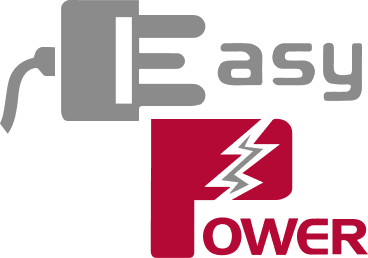Struggling with cold showers and rising power bills in Uganda? Switching to the right solar hot water system—whether a flat plate or evacuated tube collector—can mean endless hot water, massive savings, and reliable performance all year round.
In this guide, we break down everything you need to know about flat plate solar water heater and evacuated tube solar thermal systems—tailored for Uganda’s climate.
Flat Plate Solar Water Heaters in Uganda: Affordable Solar Thermal Collectors
Flat plate collectors are the workhorses of solar water heating systems:
Construction: A metal absorber plate under tempered glass in an insulated box
Operation: Heat transfers from plate to copper tubes filled with water or glycol
Cost: From 1.2M to 1.5M UGX installed
Pros:
Budget-friendly: Lower upfront cost than tubes
Durable: Tough glass and metal shield against dust and rain
Good on sunny days: 60–70% thermal efficiency
Cons:
Cloudy days: Efficiency can drop 30–40%
Heat loss: Without top-tier insulation, some night cooling occurs
Evacuated Tube Solar Collectors: High-Efficiency Solar Hot Water Solutions
Evacuated tube collectors use vacuum-sealed glass to trap every ray:
Design: Multiple glass tubes with selective-coated inner layer
Heat transfer: Heat pipes or direct-flow tubes move hot fluid to the storage tank
Cost: From 2M to 2.5M UGX installed
Pros:
All-weather performance: 70–85% efficiency even on overcast days
Minimal heat loss: Vacuum insulation retains heat overnight
Scalable: Add or replace tubes without redoing the whole array
Cons:
Higher price: More expensive initial investment
Fragility: Glass tubes need careful handling
Flat Plate vs Evacuated Tube: Comparing Solar Water Heating Systems
| Feature | Flat Plate Collector | Evacuated Tube Collector |
|---|---|---|
| Installed Cost | 1.2M–1.5M UGX | 2M–2.5M UGX |
| Thermal Efficiency | 60–70% (sunny) | 70–85% (all conditions) |
| Cloud Performance | Drops 30–40% | Drops only 10–20% |
| Durability | High; low maintenance | Moderate; tube replacement needed |
| Ideal Use | Kampala homes, urban | Highland regions, farms |
| Maintenance | Annual seal check | Vacuum integrity test |
Need help deciding? Contact our solar water heater experts. Or check out maximizing efficiency tips and solar water heating maintenance.
How Solar Water Heaters Work: Active & Passive Systems

Solar water heaters use the sun’s free energy to heat water—no noise, no fuel, low maintenance. Two main system types power Ugandan homes:
1. Active Systems (Pumps & Controls)
Direct circulation: Pumps push your household water through the collector and into your storage tank. Works best where freezing isn’t an issue.
Indirect circulation (Closed-loop): A non-freezing heat-transfer fluid circulates through collectors, then heats your water via a heat exchanger. Ideal for highland areas prone to cooler temperatures.
2. Passive Systems (Gravity & Thermosyphon)
Integral collector-storage (ICS): The tank itself is the collector. Sun heats water inside a glazed box. Simple, reliable, but needs mild-freeze climate.
Thermosyphon: Collector sits below the storage tank. Heated water rises naturally into the tank when you open a hot tap. No pumps or controls required.
Key Components
Solar Collector: Flat plate or evacuated tube captures sunlight and converts it into heat.
Storage Tank: Well-insulated vessel that holds hot water for daily use.
Controller & Pump (Active only): Regulates fluid flow for optimal heat transfer.
Backup Heater: Electric or gas backup for cloudy days or high-demand.
All systems need proper tilt, north-facing orientation, and quality insulation on pipes to maximise performance.
Best Solar Hot Water System for Uganda’s Climate
Kampala & Lowlands: Flat plate collectors give reliable hot water at a lower cost.
High-altitude Areas (Kabale, Fort Portal): Evacuated tubes excel in cool, cloudy mornings.
Remote Farms & Lodges: Combine evacuated tubes with a solar backup system for unstoppable hot water.
Professional Installation & Maintenance: Keep Your System Running
Optimal tilt & orientation: 15–20° tilt facing north for year-round heat.
Pipe insulation: Premium lagging on supply and return lines.
Cleaning: Monthly wipe-down of glass and tubes.
Annual checks: Inspect seals on flat plates and vacuum levels in tubes.
Common Issues with Flat-Plate and Evacuated Tube Solar Water Heaters
Flat-plate and evacuated tube solar water heaters are two types of solar water heating systems. Here are some common issues with each type:
Flat-plate solar water heaters:
- Scale build-up: Hard water can cause mineral build-up in the heater, reducing its efficiency.
- Freeze damage: If water inside the system freezes, it can cause damage to the flat plate collector.
- Leaks: The flat plate collectors can develop leaks over time, causing water to escape from the system.
Evacuated tube solar water heaters:
- Broken tubes: The vacuum sealed tubes can break if subjected to physical impact.
- Lack of heat transfer fluid: The system relies on a heat transfer fluid (usually water or antifreeze solution) to transfer heat from the tubes to the storage tank. If this fluid leaks or runs low, the system will not function effectively.
- Poor insulation: Poor insulation of the storage tank can result in heat loss, reducing the overall efficiency of the system.
Overall, it’s important to have regular maintenance and checkups to prevent and address these issues.
Conclusion: Choose Your Perfect Solar Water Heating System
Uganda has the sun. Now pick the collector that matches your home and wallet. Whether it’s the affordable flat plate or high-performance evacuated tube, Easy Power delivers, installs, and maintains your system nationwide.
Get a free site survey & quote now and start enjoying endless hot water today.
Solar Water Heater FAQs: Flat Plate & Evacuated Tube Collectors
Which solar water heater is best for Ugandan homes?
On a budget: flat plate collectors.
Variable weather: evacuated tube collectors.
Mix both for a hybrid solar hot water system.
How much does a solar water heater cost in Uganda?
Flat plate: ~1.2M–1.5M UGX installed.
Evacuated tube: ~2M–2.5M UGX installed.
Are evacuated tubes worth the extra cost?
Yes, in cooler or overcast regions, the higher efficiency pays off.


